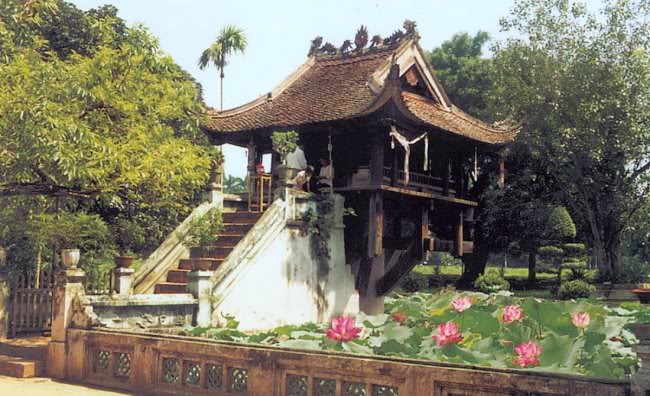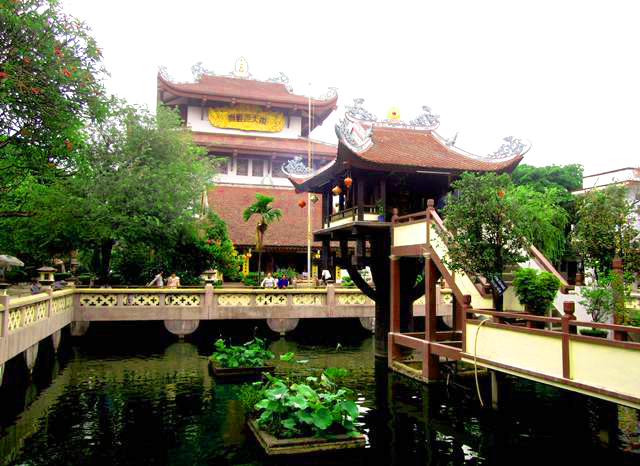One Pillar Pagoda
Overview
One Pillar Pagoda, also known as Diên Hựu Tự, is one of the most iconic and unique temples in Vietnam. Located in central Hanoi, it is renowned for its distinctive lotus-inspired architecture and symbolic meaning in Vietnamese Buddhism.

History and Significance
The pagoda was originally built in 1049 during the reign of Emperor Ly Thai Tong, who dreamt of the Bodhisattva Avalokiteshvara sitting on a lotus, leading him to build a temple in the same image. Over the centuries, it has undergone multiple restorations due to war and natural decay, but remains a national cultural and spiritual symbol.
Architecture and Highlights
The standout feature of the pagoda is its single stone pillar, rising from a lotus pond, supporting a small wooden shrine. Key highlights include:
-
The lotus-like structure, symbolizing purity in Buddhism.
-
A tranquil pond representing spiritual rebirth and peace.
-
A small shrine honoring the Goddess of Mercy.
-
Traditional Vietnamese woodwork and tiled roof.
-
Peaceful surroundings with gardens and historical markers.
Location and Access
One Pillar Pagoda is located near Ba Dinh Square and Ho Chi Minh Mausoleum, in the Ba Dinh District of Hanoi. It’s within walking distance of other major attractions and is a frequent stop for both pilgrims and tourists.

Cultural and Spiritual Importance
Despite its modest size, the pagoda holds immense spiritual significance. It is considered a symbol of Hanoi and is featured in various forms of Vietnamese art, literature, and currency. Devotees visit to pray for health, peace, and fertility, especially women hoping for children.

